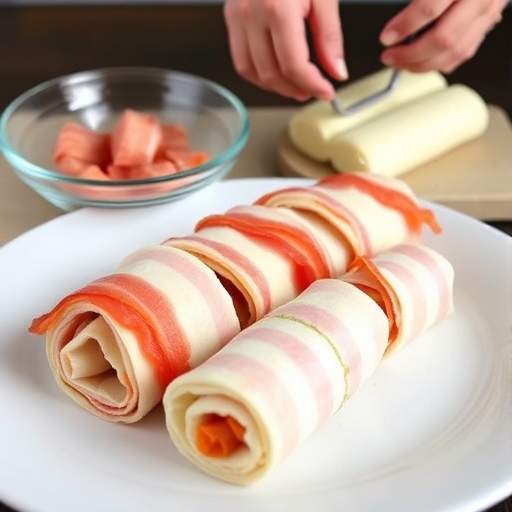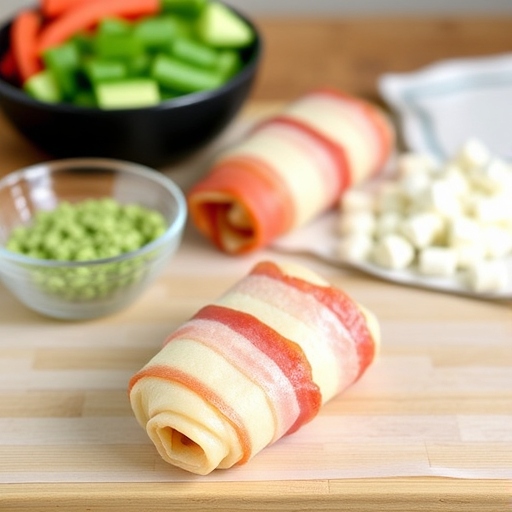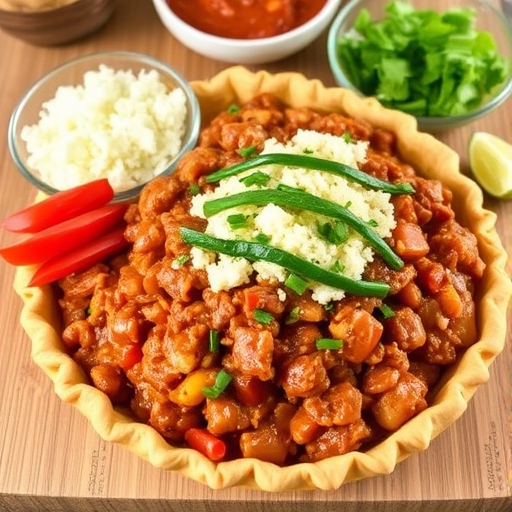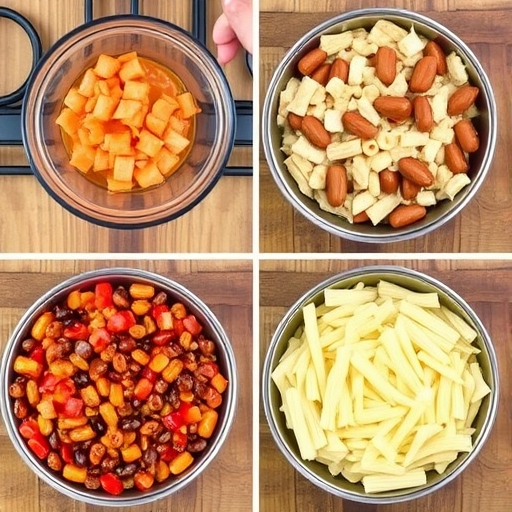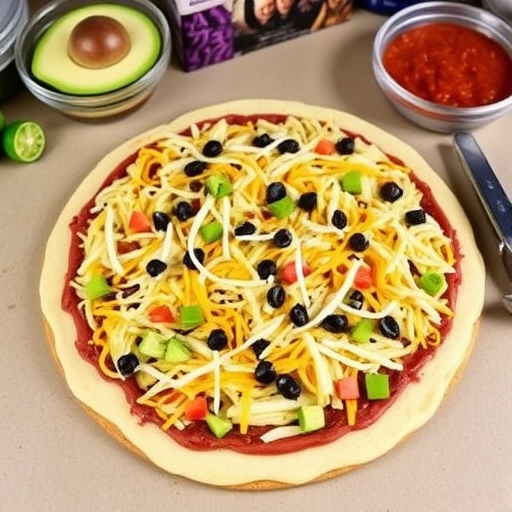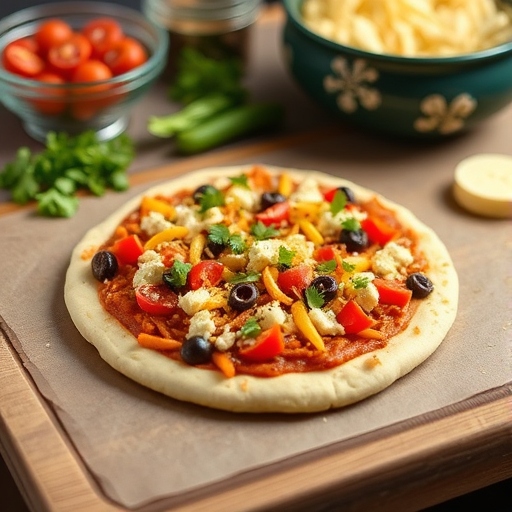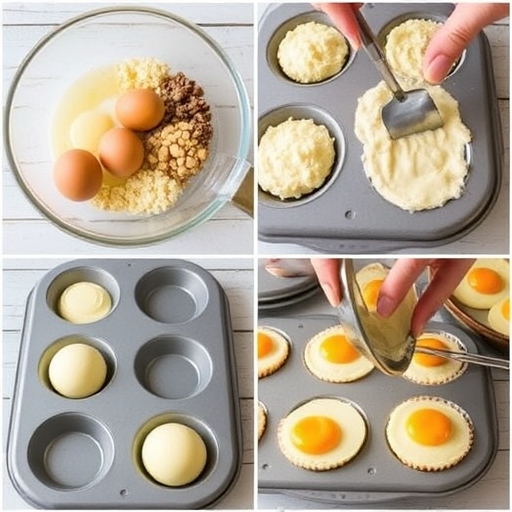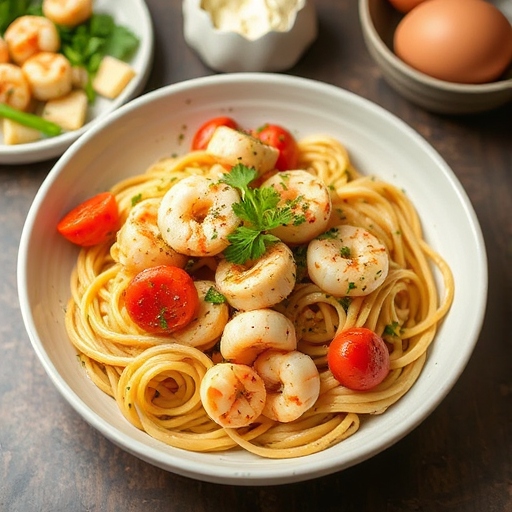Introduction
Looking for a hearty and satisfying breakfast that will keep you full for hours? The Amish Breakfast Casserole is a perfect choice. Known for its comforting blend of eggs, sausage, cheese, and potatoes, this dish is both filling and flavorful. It has been a beloved recipe in Amish communities for generations, passed down as a favorite morning meal. Whether you’re preparing it for a family gathering, a special brunch, or just to enjoy a comforting start to your day, this casserole offers warmth and satisfaction with every bite.
Table of Contents
1. The Story Behind Amish Breakfast Casserole
Amish breakfast casserole, like many Amish recipes, is built on the principles of simplicity and using locally sourced, hearty ingredients. The Amish community is known for its love of simple yet satisfying foods, often made with minimal ingredients but maximum flavor. The casserole became a popular breakfast dish because it’s not only easy to make, but also a great way to feed a crowd. It’s typically prepared the night before, allowing for a stress-free morning while you enjoy the aroma of a warm, homemade breakfast.
2. The Benefits of Making Your Own Amish Breakfast Casserole
Making this casserole from scratch allows you to control the quality of ingredients, ensuring that you’re using fresh, wholesome products. This is especially important for those looking to avoid preservatives or processed foods. Additionally, this dish is extremely versatile. You can tailor it to your tastes by adjusting the level of spice, adding vegetables, or swapping out ingredients for healthier alternatives. Plus, homemade casseroles often taste better than store-bought varieties and can be made in larger quantities, making them perfect for family gatherings or meal prep.
3. Essential Ingredients for the Perfect Amish Breakfast Casserole
To make an authentic Amish breakfast casserole, you’ll need the following ingredients:
- Sausage: Breakfast sausage, whether mild or spicy, is the key meat in this dish. You can also use turkey sausage or a plant-based sausage for a healthier or vegetarian alternative.
- Eggs: Fresh eggs form the base of the casserole, binding all the ingredients together. The eggs give the casserole its rich, creamy texture.
- Potatoes: Hash browns or cubed potatoes are commonly used. They add a satisfying starchy element to the casserole, making it filling and hearty.
- Cheese: Cheddar cheese is the traditional choice for this recipe. It melts beautifully, adding richness and flavor. You can also mix it with other cheeses like mozzarella or Monterey Jack for a unique twist.
- Onions: A small amount of diced onions adds flavor and depth to the dish. They caramelize slightly during cooking, enhancing the overall taste.
- Bell peppers: Adding bell peppers (green, red, or yellow) gives the casserole a bit of sweetness and color, making it visually appealing.
- Milk or Cream: Milk is typically used to give the casserole a creamy texture. You can substitute heavy cream for a richer dish or use a dairy-free alternative like almond milk.
- Seasonings: Salt, pepper, and garlic powder are essential, though you can add additional spices like paprika or cayenne for a little extra kick.
4. Cultural History of Ingredients
- Sausage: Sausage has been a staple in Amish kitchens for generations, often made from pork raised on family farms. In Amish culture, sausage is a common feature in breakfasts and other meals, providing a rich source of protein and flavor.
- Eggs: Fresh eggs are abundant in Amish communities, where many families keep their own chickens. Eggs are used in a variety of dishes and are an essential part of a balanced breakfast.
- Potatoes: Potatoes are a hardy crop that thrive in colder climates, making them a reliable and accessible ingredient in Amish cooking. Potatoes are used in many dishes, both as a base and as a side.
- Cheese: Amish-made cheeses are highly regarded for their quality and flavor. Amish farmers often make their own cheeses, and it is common for families to incorporate this homemade cheese into their casseroles and baked goods.
5. Equipment You’ll Need
To make this Amish breakfast casserole, you’ll need the following tools and equipment:
- Large mixing bowl: To combine the ingredients before baking.
- Frying pan/skillet: For browning the sausage and sautéing any vegetables like onions and peppers.
- 9×13-inch casserole dish: The traditional size for this dish. You can use a glass or ceramic dish for even cooking and better presentation.
- Wooden spoon or spatula: For stirring the ingredients together.
- Grater: If you’re grating your own cheese, a box grater or food processor will make it easier.
- Aluminum foil or lid: If you’re preparing the casserole the night before, you’ll need foil or a lid to cover it while it bakes.
6. Step-by-Step Instructions for Amish Breakfast Casserole
Step 1: Preheat your oven to 350°F (175°C). Grease a 9×13-inch casserole dish with butter or non-stick spray.
Step 2: In a large skillet, cook the breakfast sausage over medium heat until browned, breaking it apart into crumbles with a spatula. Drain excess fat if necessary.
Step 3: Add the diced onions and bell peppers to the skillet with the sausage and sauté until softened, about 5-7 minutes. Remove from heat and set aside.
Step 4: In a large mixing bowl, whisk together the eggs, milk, salt, pepper, and garlic powder.
Step 5: Add the frozen hash browns (or cubed potatoes) into the mixing bowl, followed by the cooked sausage and vegetable mixture. Stir to combine.
Step 6: Pour the entire mixture into the prepared casserole dish. Sprinkle the shredded cheddar cheese evenly over the top.
Step 7: Cover the dish with aluminum foil and bake in the preheated oven for 40 minutes.
Step 8: After 40 minutes, remove the foil and continue baking for an additional 15-20 minutes, or until the eggs are fully set and the cheese is melted and bubbly.
Step 9: Remove from the oven and let cool for a few minutes before serving.
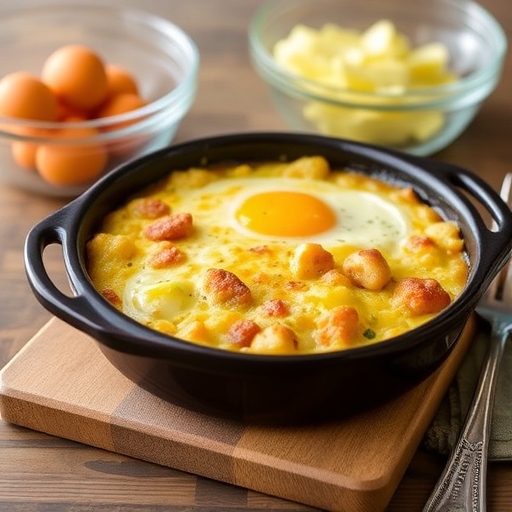
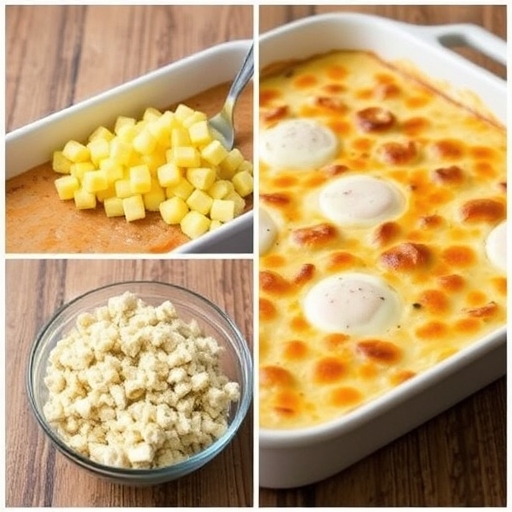
7. Suggestions for Serving and Storing
Serve the Amish breakfast casserole with fresh fruit, toast, or a side of bacon or sausage. For a refreshing touch, consider adding a green salad or a simple yogurt parfait on the side.
To store leftovers, allow the casserole to cool completely before refrigerating it in an airtight container. It will keep for 3-4 days in the fridge. You can also freeze portions for up to 3 months. Simply reheat in the microwave or oven before serving.
8. Chef Simon’s Tips for Amish Breakfast Casserole
- Make-Ahead Option: This casserole can be assembled the night before. Simply cover it with plastic wrap and refrigerate overnight. In the morning, bake as directed, adding a few extra minutes to the cooking time if needed.
- Customize the Vegetables: Feel free to add or swap out vegetables according to your preferences. Mushrooms, spinach, or even tomatoes would be great additions.
- Top with Fresh Herbs: Garnish the casserole with freshly chopped herbs like parsley, chives, or cilantro for a burst of color and freshness.
9. Emotional and Psychological Impact of Food
Food has a powerful emotional impact. Meals like the Amish breakfast casserole are more than just sustenance—they are a way to connect with loved ones and create lasting memories. This casserole evokes feelings of comfort and warmth, making it the perfect meal for family gatherings, special occasions, or a lazy weekend breakfast.
10. Mindful Cooking Techniques
When preparing this dish, take your time to focus on each step. Mindful cooking allows you to fully appreciate the ingredients, and it encourages you to enjoy the process rather than rush through it. Engaging all of your senses in the kitchen, from the smell of sizzling sausage to the sight of melted cheese, can make the cooking experience more fulfilling.
11. Tips for Keeping the Recipe Fresh Longer
- Freezing: If you’ve made extra, freezing leftovers in individual portions will make for a quick and easy breakfast later.
- Refrigeration: Store leftover casserole in an airtight container to prevent it from drying out in the fridge.
12. Advanced Culinary Terms and Techniques
- Sautéing: This technique involves cooking food quickly in a small amount of fat over medium-high heat. It’s used here for browning the sausage and softening the vegetables.
- Casserole Method: This is a technique where ingredients are layered or mixed together and then baked, often resulting in a dish that’s both hearty and satisfying.
13. Healthy Ingredient Alternatives
For a healthier version of this recipe, use turkey sausage or plant-based sausage, and swap regular potatoes for sweet potatoes. You can also use low-fat cheese or omit cheese altogether for a lighter dish.
14. More Serving Ideas
Serve this dish with a side of roasted vegetables or a light salad for a more balanced meal. It also pairs well with a cold glass of freshly squeezed orange juice or a hot cup of coffee.
15. Common Issues and Solutions
- Soggy casserole: If your casserole turns out too soggy, it could be because the potatoes released too much moisture. Be sure to thaw frozen hash browns thoroughly or pat them dry before adding them to the dish.
16. Variations to Try
- Southwest-style casserole: Add black beans, corn, and diced tomatoes for a Southwestern twist.
- Vegetarian Option: Replace the sausage with sautéed mushrooms, spinach, or other vegetables. You can also use a plant-based sausage substitute to retain the savory flavors without the meat. This will create a lighter and more plant-forward version of the casserole.
- Spicy Southwestern Casserole: Add some chopped jalapeños or a sprinkle of chili powder and cumin to the casserole to give it a zesty, spicy kick. You can also top it with a handful of tortilla chips and melted cheese to bring in some Mexican flair.
- Bacon Lover’s Casserole: If you’re a fan of bacon, add crumbled cooked bacon in place of or alongside the sausage. The smoky flavor will add a delicious depth to the casserole.
- Cheese Lovers: While cheddar is the classic choice, experimenting with different cheeses can elevate the dish. Try adding Monterey Jack, Gouda, or even a blend of cheeses to bring a more complex flavor profile.
17. Nutritional Information and Health Benefits
Amish breakfast casserole is a hearty and calorie-dense dish, but it can be adapted for a healthier approach depending on your ingredient choices. Here’s a breakdown of some common ingredients and their nutritional benefits:
- Eggs: A great source of protein, vitamins A, B12, and D, eggs are an essential ingredient in this casserole. They also provide healthy fats, particularly in the yolk, and help bind the casserole together.
- Sausage: While sausage is high in protein, it’s also rich in fat and sodium. For a healthier alternative, use lean turkey sausage or a plant-based option.
- Potatoes: Potatoes are an excellent source of carbohydrates and potassium. They provide a feeling of fullness and are an important source of energy, especially in the morning.
- Cheese: Cheese is high in calcium, protein, and fat. It adds creaminess to the dish, but it can be replaced with a lower-fat version to reduce calories while still providing flavor.
- Vegetables: Bell peppers, onions, and other veggies in the casserole contribute essential vitamins and fiber. These vegetables also add color and texture, making the casserole not only more nutritious but also visually appealing.
18. The Art of Pairing Amish Breakfast Casserole
Pairing this casserole with the right foods can enhance the overall dining experience. Here are some ideas:
- Fresh Fruits: Serve the casserole with fresh fruit to add a refreshing contrast to the rich and hearty dish. Consider seasonal fruits like oranges, strawberries, or a mixed fruit salad.
- Toast or Biscuits: A slice of buttered toast or warm homemade biscuits complements the casserole perfectly. It helps balance the richness with something light and airy.
- Beverages: Pair your breakfast casserole with a hot beverage such as freshly brewed coffee, a cappuccino, or hot tea. If you prefer something cold, a glass of orange juice or iced tea will also work well.
- Salads: For a more substantial meal, pair it with a light green salad, such as a spinach salad with a vinaigrette dressing. The acidity from the dressing will help balance the richness of the casserole.
19. Weather and Recipe Outcome
The weather can affect the preparation of any recipe, and the Amish Breakfast Casserole is no exception. Here’s how:
- Cold Weather: During chilly mornings, the warm and hearty casserole can be the perfect breakfast to help you start the day on a comforting note. It’s also a great dish to serve when hosting a winter brunch, as it’s sure to keep everyone full and satisfied.
- Hot Weather: While this casserole is typically more suitable for cold weather, it can still be enjoyed during the warmer months. Just ensure it’s served at room temperature or slightly chilled, and consider adding a refreshing salad on the side to balance the richness.
20. Other Breakfast Recipes to Explore
If you love the Amish Breakfast Casserole, here are a few other breakfast recipes to try:
- Breakfast Burritos: A quick and customizable breakfast filled with scrambled eggs, sausage, cheese, and your favorite toppings, all wrapped in a soft tortilla.
- Shakshuka: A Middle Eastern dish consisting of poached eggs in a flavorful tomato sauce, often served with crusty bread for dipping.
- Vegetarian Breakfast Tacos: Scrambled eggs with avocado, salsa, and a sprinkle of cheese, all wrapped up in a soft tortilla.
- Classic Pancakes: A staple breakfast choice made from scratch, these pancakes are light, fluffy, and perfect with syrup or fresh berries.
- Egg and Cheese Muffins: A simple yet tasty recipe where eggs and cheese are baked inside a muffin cup, making for a portable, easy-to-eat breakfast.
21. Focus on Tools and Equipment
When making Amish Breakfast Casserole, using the right tools and equipment ensures that the dish turns out perfectly every time. Here’s a rundown of the most important items:
- Skillet: A heavy-bottomed skillet is ideal for cooking the sausage and vegetables. A cast-iron skillet works wonderfully, as it evenly distributes heat and helps develop a rich flavor in the ingredients.
- Mixing Bowl: A large mixing bowl is needed to combine all of the casserole ingredients. A glass or stainless steel bowl will prevent any reaction with the acidic ingredients (like tomatoes or vinegar) in the dish.
- Casserole Dish: A 9×13-inch baking dish is standard for this recipe. Choose a high-quality glass or ceramic dish for even cooking and better presentation.
- Grater: Grating your own cheese can make a big difference in the flavor and texture of the dish. A box grater or food processor can make this task easier.
- Oven Thermometer: If you’re unsure whether your oven’s temperature is accurate, an oven thermometer can help you ensure your casserole bakes at the right temperature for optimal results.
22. Frequently Asked Questions (with Answers)
Q: Can I use frozen hash browns instead of fresh potatoes? A: Yes, frozen hash browns work perfectly in this recipe. Just make sure to thaw them completely and drain any excess moisture before adding them to the casserole.
Q: Can I make this casserole ahead of time? A: Absolutely! You can assemble the casserole the night before, cover it with plastic wrap, and refrigerate it overnight. In the morning, just pop it in the oven and bake as directed.
Q: Can I use a different type of cheese? A: Yes, feel free to experiment with other types of cheese, such as Monterey Jack, mozzarella, or Gouda. Mixing different cheeses can add a unique flavor to the casserole.
Q: How do I store leftovers? A: Leftovers should be stored in an airtight container in the refrigerator for up to 3-4 days. You can also freeze the casserole for longer storage. Just portion it out and wrap it tightly in plastic wrap or aluminum foil before freezing.
Q: Can I make this casserole vegetarian? A: Yes, simply substitute the sausage with vegetables like mushrooms, spinach, or bell peppers, or use a plant-based sausage substitute for a vegetarian version.
Conclusion
The Amish Breakfast Casserole is a timeless dish that offers comfort, flavor, and versatility. Whether you’re preparing it for a busy weekday breakfast or a special weekend brunch, this casserole is sure to please a crowd. With its rich combination of eggs, sausage, cheese, and potatoes, it’s the kind of dish that satisfies both the body and the soul. Plus, with its many variations and make-ahead options, it’s a recipe that you can adapt to your own tastes and needs. Don’t forget to share it with family and friends to create lasting memories over a delicious meal.



